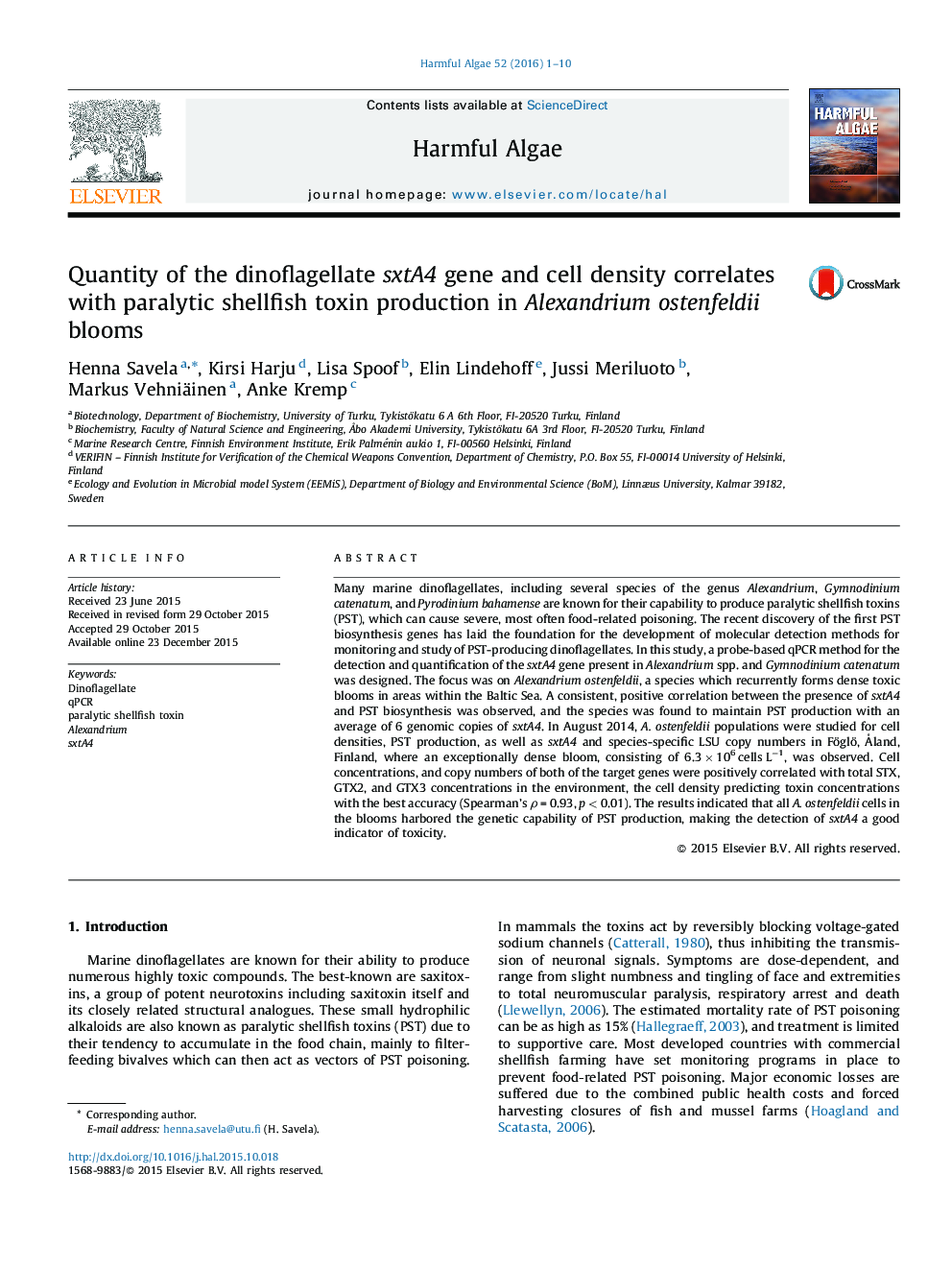| کد مقاله | کد نشریه | سال انتشار | مقاله انگلیسی | نسخه تمام متن |
|---|---|---|---|---|
| 4545194 | 1626919 | 2016 | 10 صفحه PDF | دانلود رایگان |

• A probe-based qPCR method for the dinoflagellate sxtA4 gene.
• Focus on Baltic Sea Alexandrium ostenfeldii, found to contain < 12 copies of sxtA4.
• An exceptionally dense bloom, consisting of up to 6.3 × 106 cells L−1, was studied.
• Cell density, sxtA4 and LSU copies positively correlated with STX, GTX2, and GTX3.
Many marine dinoflagellates, including several species of the genus Alexandrium, Gymnodinium catenatum, and Pyrodinium bahamense are known for their capability to produce paralytic shellfish toxins (PST), which can cause severe, most often food-related poisoning. The recent discovery of the first PST biosynthesis genes has laid the foundation for the development of molecular detection methods for monitoring and study of PST-producing dinoflagellates. In this study, a probe-based qPCR method for the detection and quantification of the sxtA4 gene present in Alexandrium spp. and Gymnodinium catenatum was designed. The focus was on Alexandrium ostenfeldii, a species which recurrently forms dense toxic blooms in areas within the Baltic Sea. A consistent, positive correlation between the presence of sxtA4 and PST biosynthesis was observed, and the species was found to maintain PST production with an average of 6 genomic copies of sxtA4. In August 2014, A. ostenfeldii populations were studied for cell densities, PST production, as well as sxtA4 and species-specific LSU copy numbers in Föglö, Åland, Finland, where an exceptionally dense bloom, consisting of 6.3 × 106 cells L−1, was observed. Cell concentrations, and copy numbers of both of the target genes were positively correlated with total STX, GTX2, and GTX3 concentrations in the environment, the cell density predicting toxin concentrations with the best accuracy (Spearman's ρ = 0.93, p < 0.01). The results indicated that all A. ostenfeldii cells in the blooms harbored the genetic capability of PST production, making the detection of sxtA4 a good indicator of toxicity.
Journal: Harmful Algae - Volume 52, February 2016, Pages 1–10